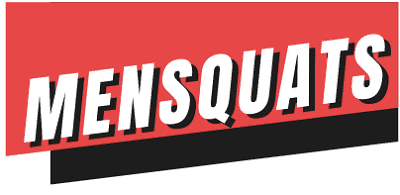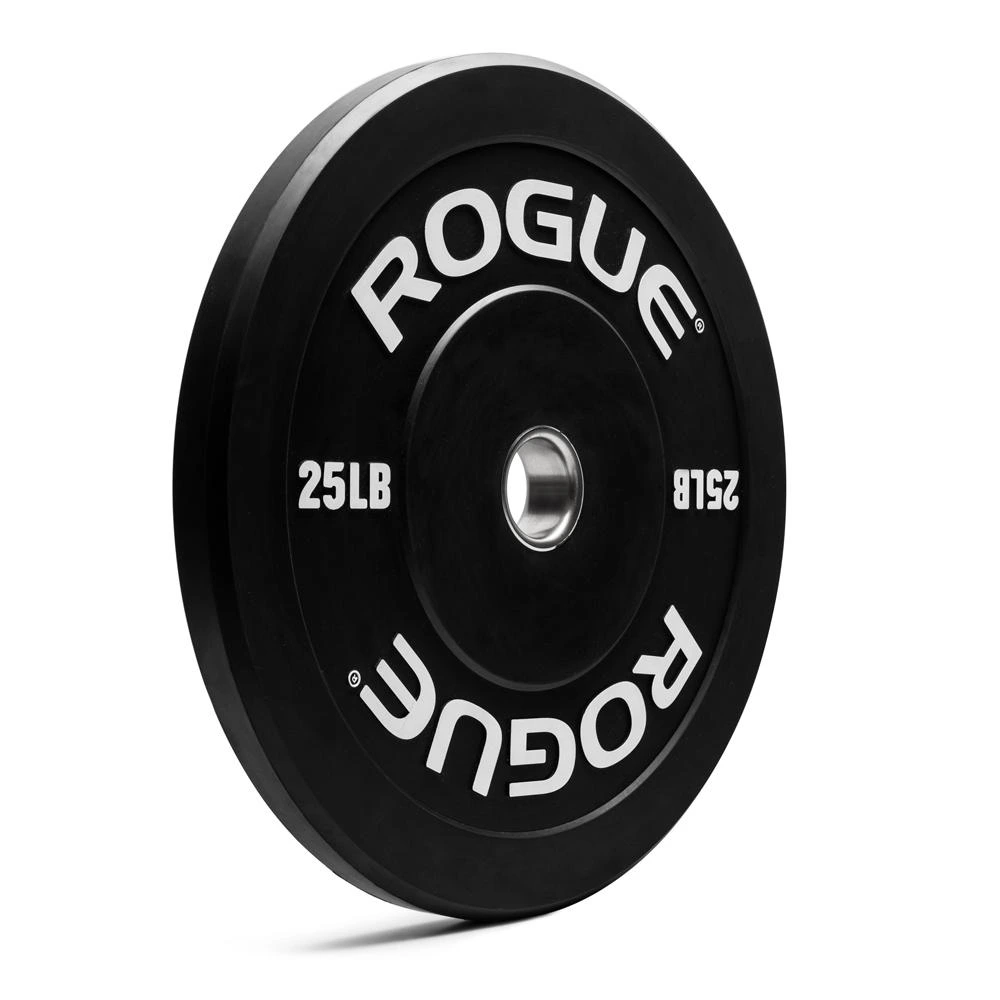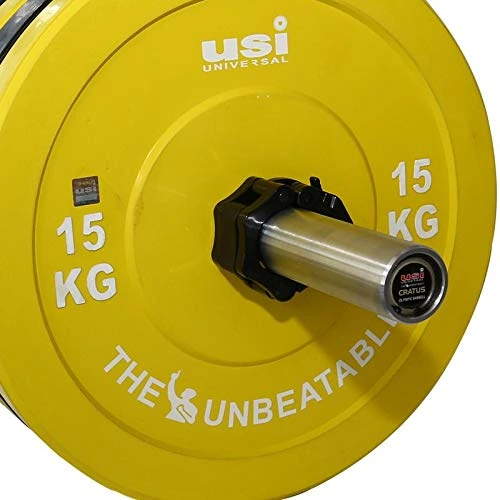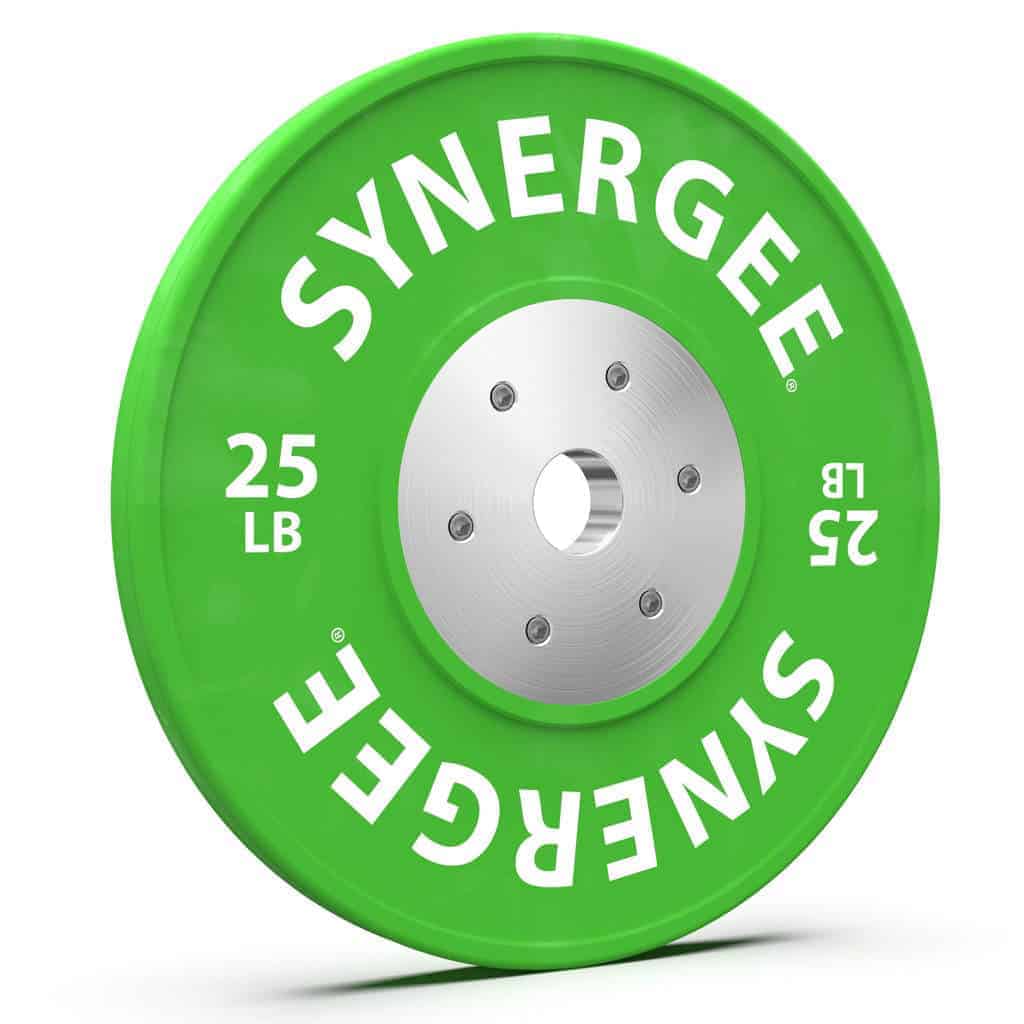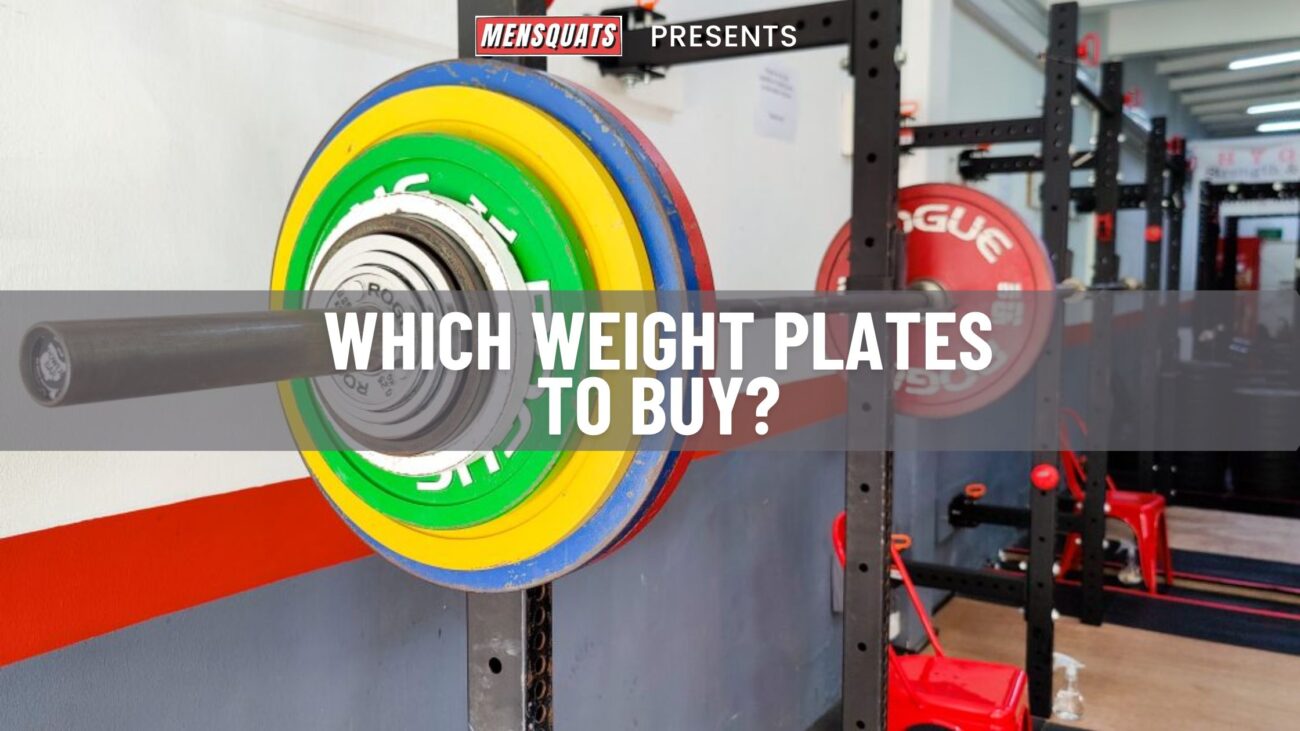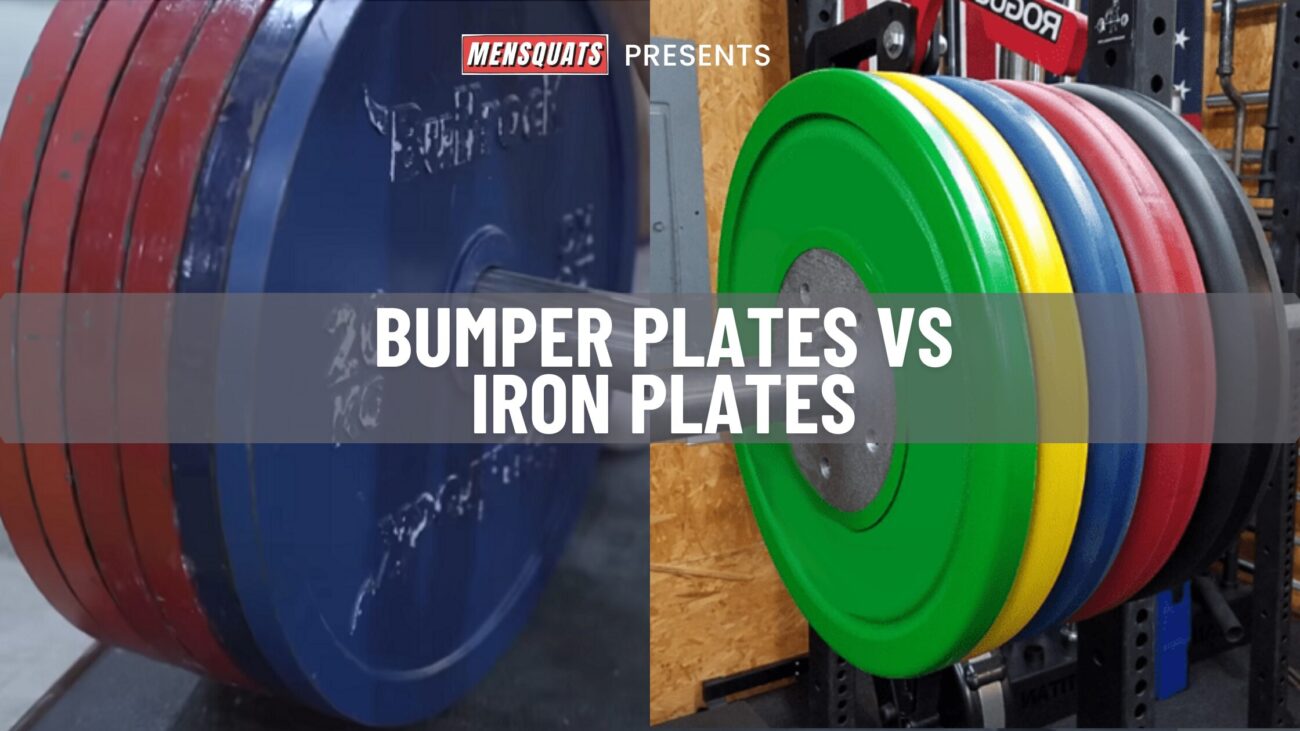The Most Logical Answer To Are Bumper Plates Worth It?
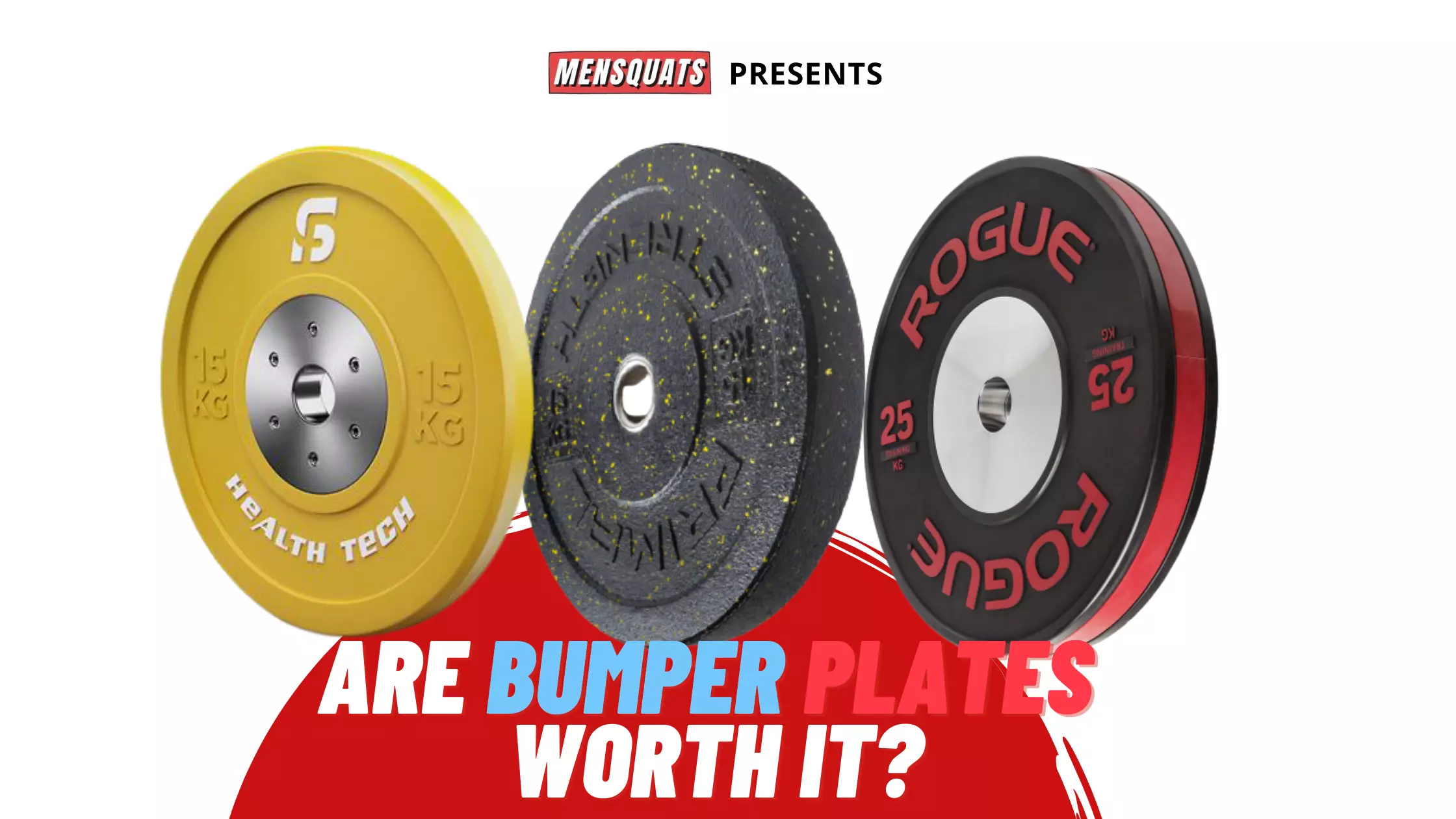
- 5 Reasons To Decide On Are Bumpers Plates Worth It For You.
Why use bumper plates? Are Bumper Plates Worth it? Should I buy bumper plates? These are some of the many questions people ask when first deciding between bumper and steel plates. However, you can mix them without worrying.
😄 But there are many reasons why people love bumper rubber plates alone. They are rubbery, bouncy, colorful, and don’t smell like rust. Also, they give you the illusion that you’re lifting more weight.
Yet the question remains the same? “Truly, not many people out there actually need to buy bumper plates”, and it isn’t recommended to be in all types of gyms and with people lifting in all conditions. 😅
Why? From firsthand experience, I don’t think they’re necessary but if you don’t care about my opinion and just want to hear about what I think about the bumper plates in general, and which ones you should buy if you’re dead set on getting them.
Then skip ahead of all this dribble and get right to the point.
As a weightlifter, I train with bumper plates for quite a while and I learned a lot of things and wish I knew some of these things going into making this blog where we will talk about who shouldn’t buy bumper plates, and if you do then how to look for the best?
Let’s start. ❤️
5 Reasons To Decide On Are Bumpers Plates Worth It For You.
In what cases, you shouldn’t buy rubber bumper weight plates.
1. If You Aren’t A Weight Lifter:
Far and away, the biggest reason I don’t suggest bumper plates is that most people who are interested in buying them won’t actually lift in a way that they’re really beneficial. Like for Olympic-style weightlifting, where you’re dropping the bar and the weights from an overhead position or from waist level in a significantly uncontrolled way time and time again.
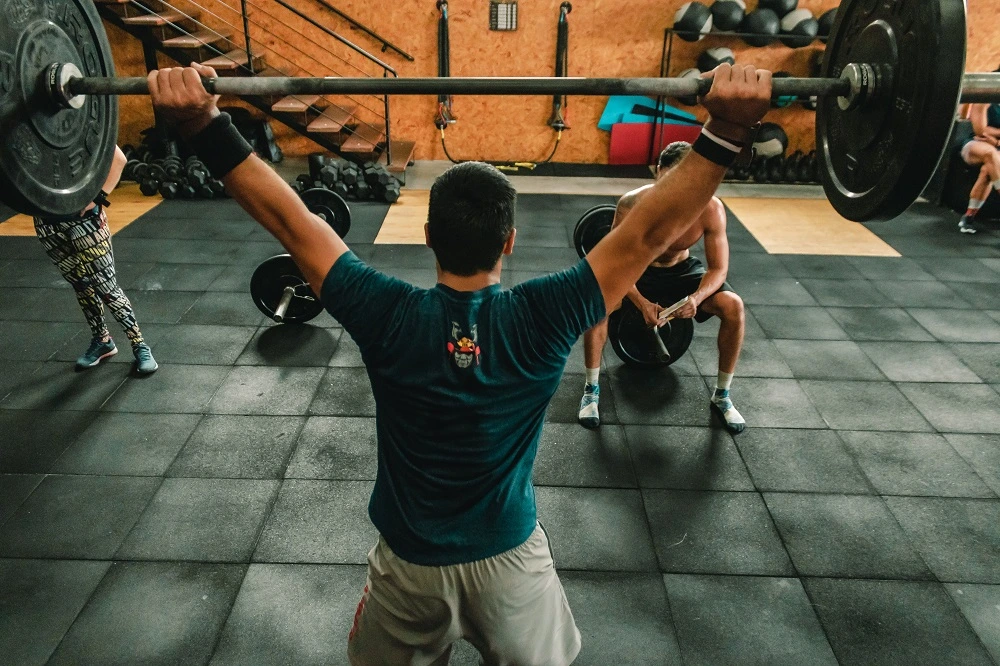
😮💨 Are bumper plates worth it? Yes, and No. Most people (or normal gym-goers) just don’t lift that way that warrants bumper plates. Yes, there are some out there that do. In that case, you’re in the minority of the people whole need rubber bumper weight plates for sure.
For the rest, who come to the gym for squatting, benching, deadlifting, rowing where the barbell never hits the floor in an uncontrolled fashion.
But it’s always in some sort of controlled manner where the impact isn’t going to be that significant as if it when dropped from an overhead height. Which won’t damage the floor, bar, and the rubber bumper plates themselves. 😊
Now the question most would ask: What if I don’t lift that way but I still want to get rubber bumper weight plates because:
Q: I want to protect the flooring of my gym.
➡️ After training with both rubber bumpers plates and with steel plates, I found obviously no difference in what it did to the flooring itself. Because you have to remember that if you’re doing things like deadlifting with 400 pounds or even less where the chances of it cause damage to the floor are highly suspected.
Then you would have a deadlift platform at home/ or rubber flooring, at least that’s going to absorb all of that shock, anyway.
The range of motion also isn’t somewhere great from where you’re dropping it in an uncontrolled manner, so you won’t be noticing any larger difference or damage.
In fact, it would be none, nonexistent, with a bumper plate or without them.
Q: It’s going to be less loud than some steel plates.
➡️ Yes, it will be less loud, especially if you’re dropping it from overhead. But most people also wouldn’t be dropping steel plates from overhead.
For obvious reasons, from where the weights are going to start moving around, clanging and banging between each other or hitting a very hard surface from far away.
And if you’re dropping a lot of weight regardless of its 600 pounds on bumpers or 600 pounds on steel plates even with shock-absorbing flooring from a height. It’s still going to make a lot of noise.
Why? Because “600 pounds is 600 pounds” even if you use any rubber plates. 😊
So the loudness factor doesn’t really make much play here. You can quietly put down bumpers just as well as you can quietly put down steel plates.
Remember, bumper plates have no edge in being quiet.
2. If You Load Too Many Weights On A Bar At A Time. 😀
Bumper plates are a lot different from steel plates. They are thicker but of the same diameter so that each plate land on the floor equally. ✔️ Depending on which kind of bumpers you get, they can take up a lot of space in the bar.
Where you might only be able to fit 4 * 25 kg per side on a barbell, now you can only really max out your train lifts around 200 kg or so. A lot of people that do strength train and want to lift a lot more than that, like 200 or 300 kgs actually and you buy all bumper plates. Then you’re not able to fit enough of them on the barbell in order to actually increase the total load.
That being said for most lifts that require bumper weight plates, used for Olympic-style weightlifting, you’re not going to be using hundreds and hundreds of kilos. 🏋️
So if you’re dead set on getting bumpers then make sure that you’re just getting a set in order to do Olympic lifts that you’re worried about and then spend your money better on some steel plates that it’s going to allow you to do your powerlifting or strength style movements.
Because what’s the point of investing in hundreds of dollars worth of bumpers if you can only clean & jerk with 200 kgs. This doesn’t really make too much sense.
3. If You Can’t Spend Too Much. (Expensive)
➡️ For real, bumper plates are twice as expensive as steel plates. And they start to get expensive. This would hit your wallet really hard, that money which could be used in better circumstances to buy other equipment.
That means, for the most part, bumper plates just don’t make sense for a lot of people. However, if you want only rubber bumper plates, first what I will say is if you’re going to be building a gym all as a package then get your plates, barbell, and rack from the same place because you want to be able to consolidate shipping as much as possible.
Especially if you’re talking about buying several hundreds of kilos/ lbs of weight. You don’t want to have two different shipping bills come in, because that’s going to cost you several hundred dollars EXTRA. 💯
When you’re looking at companies out there as you might find one that you think is a very low price per kg, but when you factor in shipping, it might be more expensive than some of the other brands that are out there.😀
That actually includes free shipping, so that’s an example to take a look at as well.
Obviously, 💲 price is something that’s important. You wouldn’t want to spend a ton of money on bumpers necessarily, so shop around the different companies after you decide on the kind of which width you want to get.
Look at the pricing and see if it makes the most sense. Do the quick math and, on average, you would get each plate/ per kg somewhere between $2 to $4.
4. If You Find Catching Bumper Plates Hard.
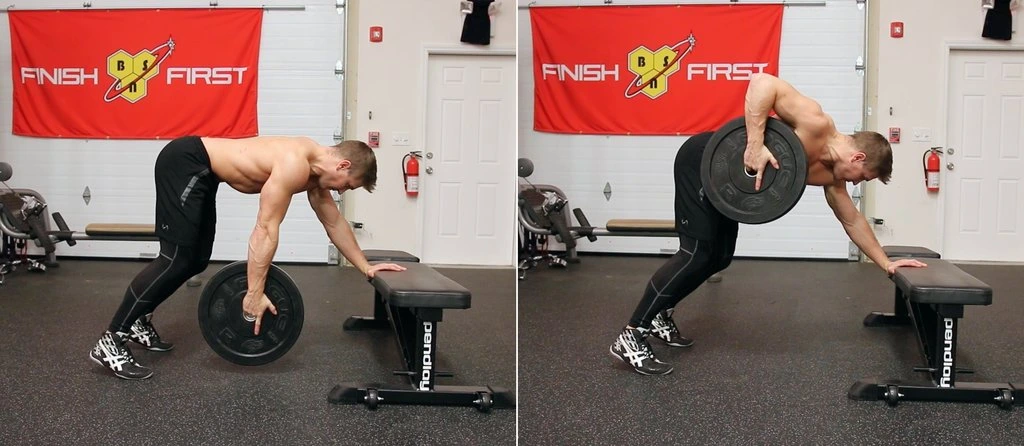
They’re extremely slick and slippery, which sounds like a dumb thing to call out. But if you’ve ever tried to pick up a 20 or 25-kilo rubber bumper plate, that’s laying face down on the floor.
It’s very difficult and your fingertips would suffer because a lot of them are cut precisely where there are no rounded edges and it’s just almost impossible to pick one up.
So if you need to carry 2 plates at once, there is only one way you need to grip it from the center ring by fixing your two fingers in and move it.
On the contrary, many cast-iron plates come with a 3 side opening which can be used as a handle to carry or load or unload the plate from the bar. This would ease the lifter’s pain. Where bumpers fail. ❌
5. If You Get Confused Easily In Their Selection.
There are a lot of bumpers out there, and everyone is different. Most come out from fringe sport, rogue, and many. From India challenge, bullrock and sfhealthtech, they’re just a couple of popular brands out there when it comes to buying bumper weight plates.
But most bumpers these days a lot of them are outsourced. This means no matter which company you are looking at they all are pretty much made equal.
✔️ So what you want to look at is a couple of key bumper plates available.
You could read our special blog on Different Types of weight plates found in the gym
High Temp Bumpers:
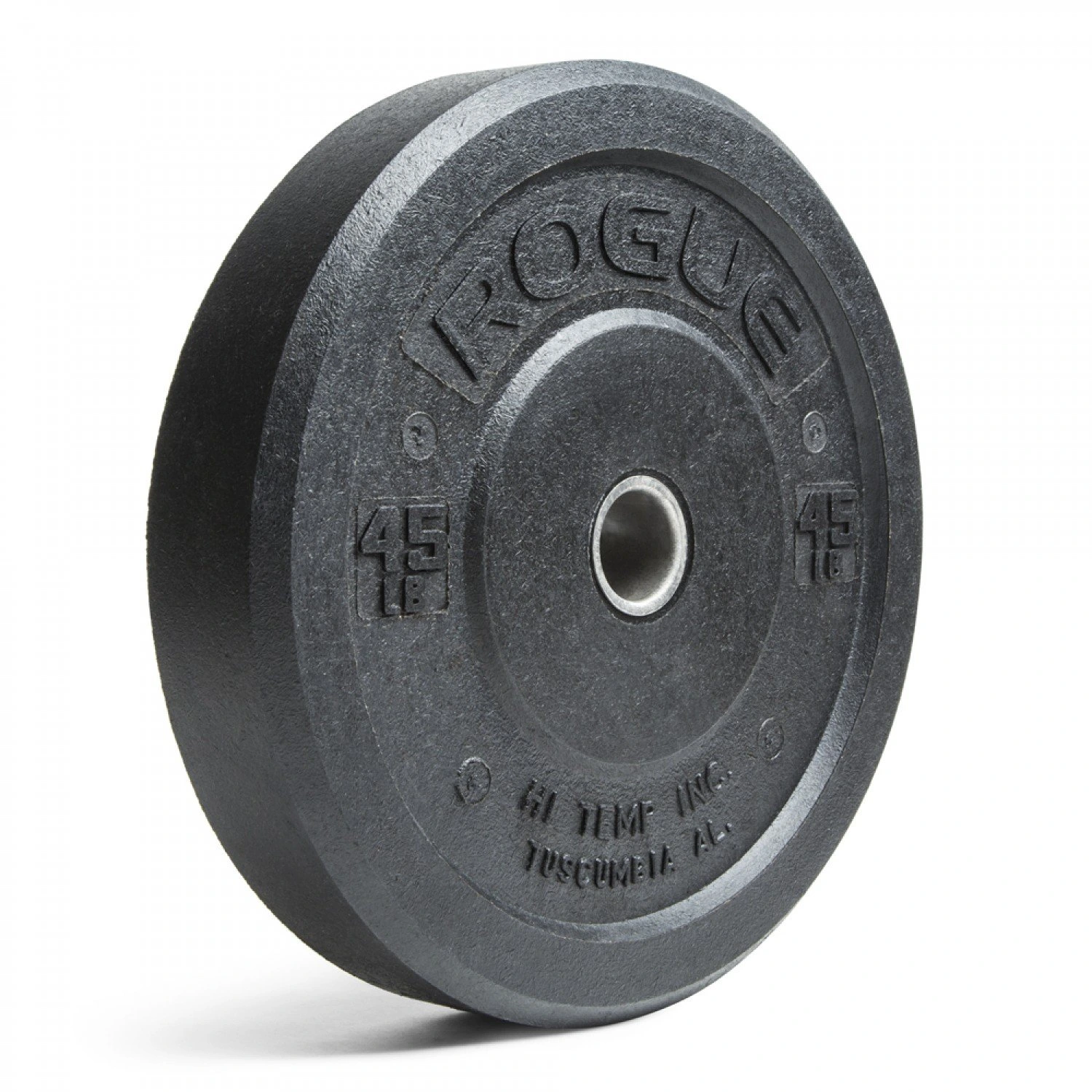
These are actually crumb rubber bumper plates, made from little bits of rubber and recycled tire. They are called high temp, the name of the most popular brand that makes them. On high temp bumpers, you’ll find the 45-pound plates are almost 4” wide, which again really limits how much weight you can put on a barbell.
Regular black bumpers:
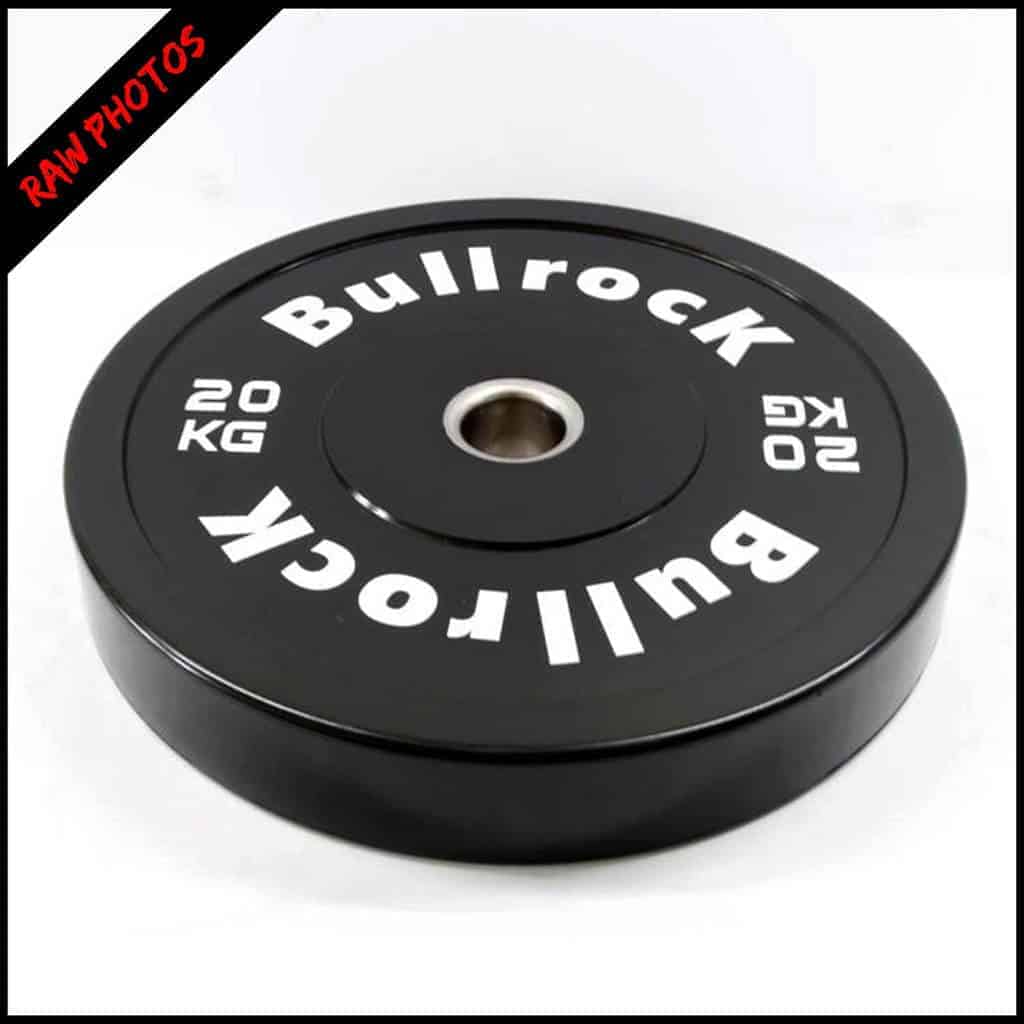
These are the ones you see most often they’re typically like a glossy-looking black style bumper, usually all black. But sometimes you can get some contrast and either the colors being adapted to the weight. They have sometimes a strip or just the lettering of a contrasting color. They also have a small steel insert right in the middle hub, like some of the high temp bumpers. Regular bumpers are thinner. 🤔
Training or competition style bumpers:
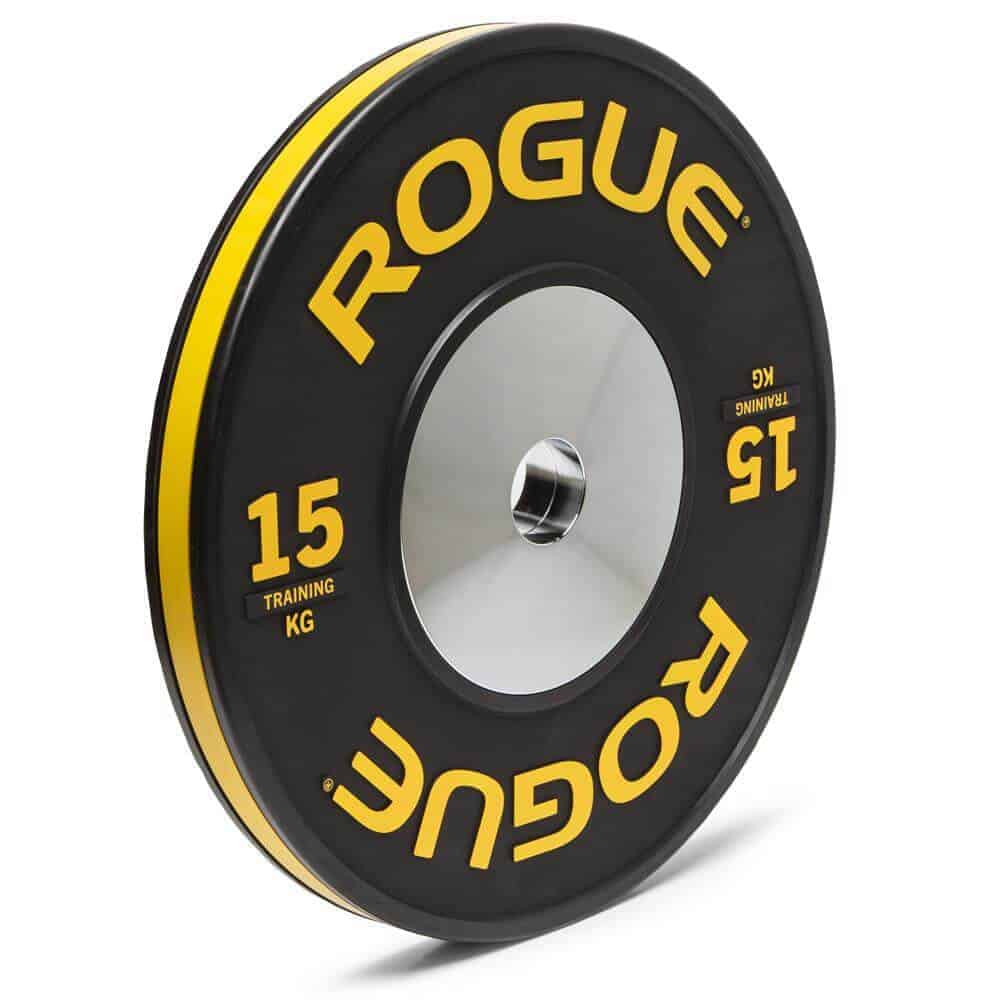
These are ones with the larger steel inserts, or hubs and thinner. They are usually found almost always color-coded to the weights they’re used to easily identify them and also because they are used in competitions. So the 20 kgs or 45-pound ones are blue, the 55 pounds or 25 kg plates are red 25 kilograms. Each has a different width/ thickness. In that way, you’re gonna be able to fit as much weight as possible. View all Rogue plates here.
Urethane bumpers:
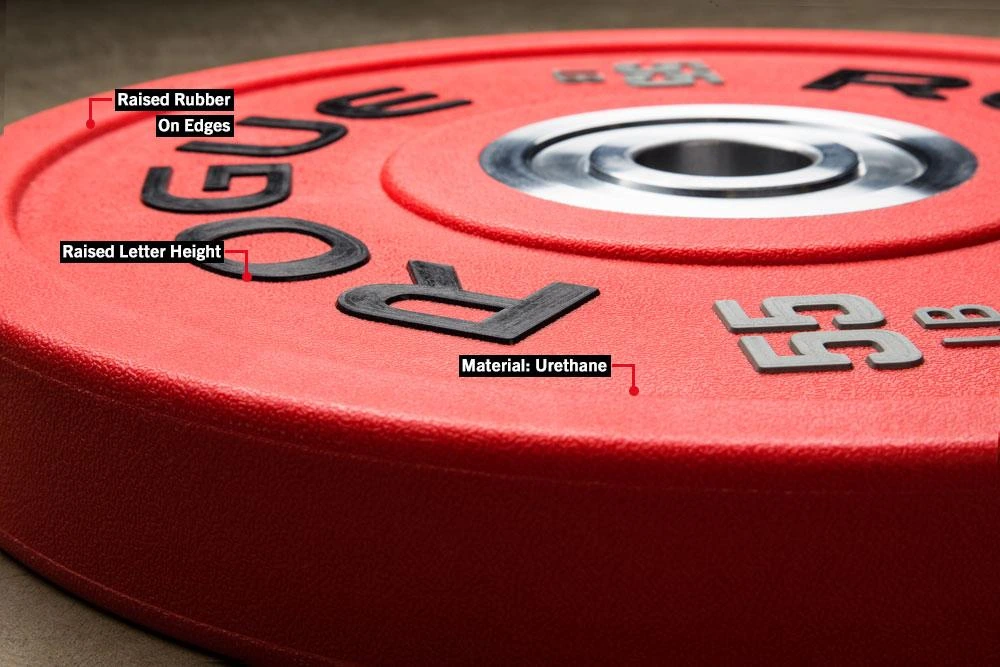
These are certainly very popular, but I don’t think they offer that much benefit over a competition or training style bumper. Yet they’re a heap more expensive, which is obviously something that I don’t think is worth it. 🙂
Another thing you can pay attention to if you want to buy weight plates are:
What’s The Point of Bumper Plates You Must Remember Before Buying?
1. Check Durometer Rating:
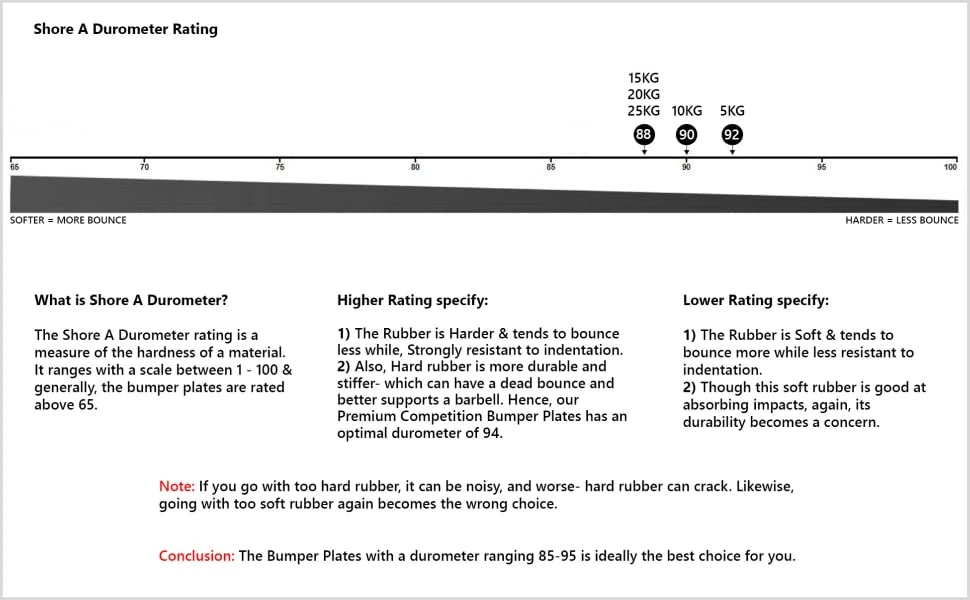
This means how hard the rubber plate will bounce after being dropped. Durometer rating doesn’t matter if do not perform Olympic lifts that warrant bumpers. For most of us that train for bench, squat, and deadlift, the low rating wouldn’t matter.
But for the most part, most of these bumpers these days are pretty standard, anywhere between 85 up to around 94. So you’ll find that much difference.
Unless, of course, you’re doing tons and tons of high rep work, then you might get a little sick of doing it. And if you’re training outside on no type of lifting platform, maybe the chrome rubber bumpers make more sense there. But otherwise, they’re more expensive because they’re actually made in America, whereas most other bumpers are outsourced. 😐
They’re also a lot wider, so unless you’re training outside specifically, I probably would stay away from those.
2. Check Weight Accuracy:
Talking about some of the competition style bumpers and bumpers in general, what you’ll find for a lot of these plates are they’re pretty accurate in terms of their weight tolerance. That means whatever weight is stated on there, almost all of them are accurate. 😄
Regardless if you go with high temp bumpers, which are inaccurate. But for a most regular bumper or a competition style bumper or a urethane bumper, they all are within one percent of the given stated weight (within 10 to 15 grams).
But the downsides of there being is of them trying to hammer home these points, they’re more expensive, they also take up a lot of weight on the bar.
3. Check The Middle Steel Ring:
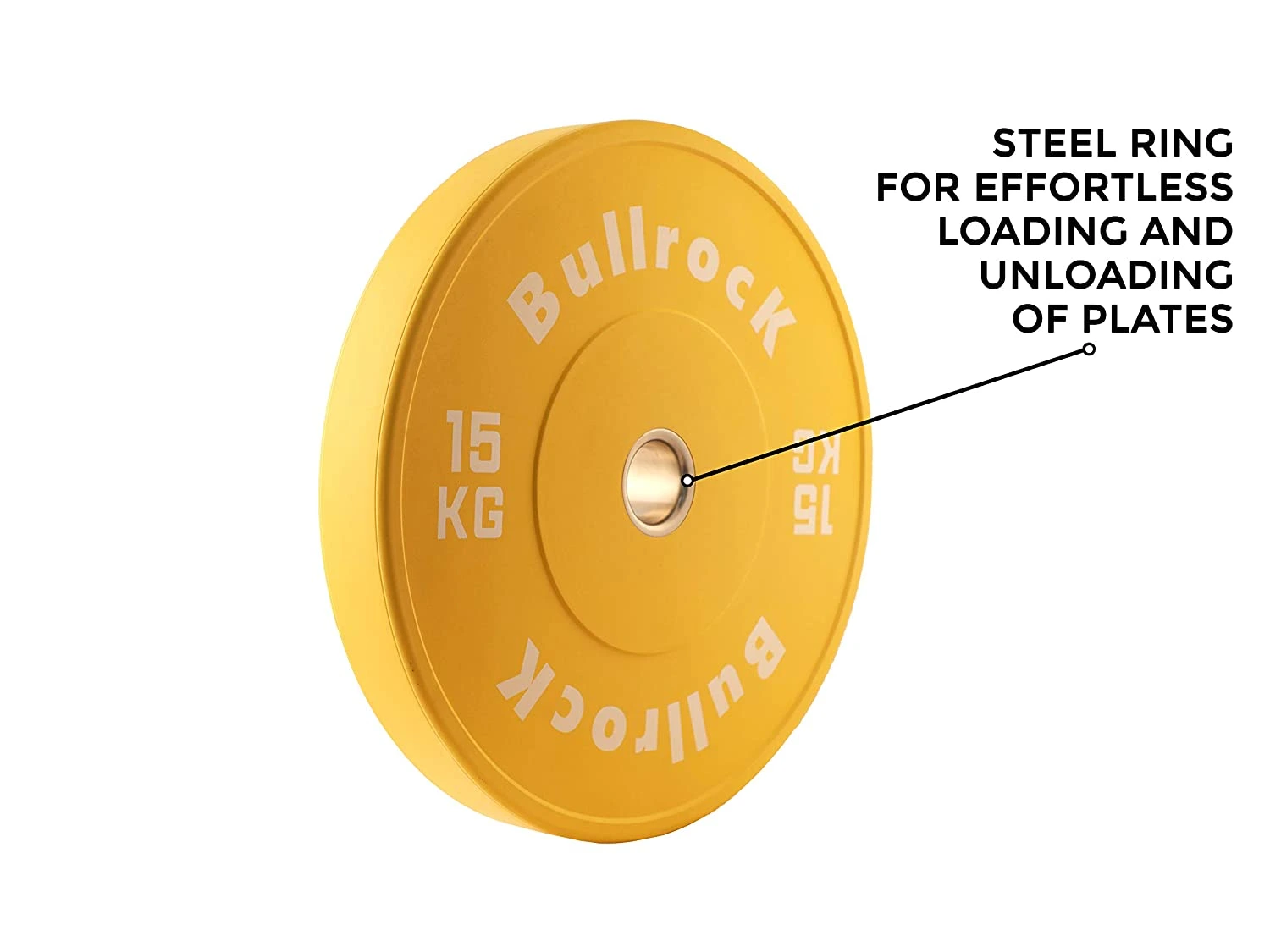
If you’re going for the training or competition style bumpers, then make sure even though they have those nice steel inserts in the middle. Often times they’re also connected via hubs and bolts, so if you’re doing a lot of Rep work and a lot of pounding and dropping of those weights.😐
Those things can come loose over time so it might make more sense to take a look at the regular style bumpers as well because they just have those slimmer steel inserts which save you some money in the long run and are still going to be pretty accurate.
It all depends on what you want, in colors, aesthetics, pricing, and width and thickness.
Should I buy bumper plates? Which are the best ones?
If I was taking a look at bumper weight plates, what I would suggest is:
Echo Bumper from rogue/ Black bumper:

Shop on Rogue 
Shop on Amazon India
Rogue is the best value for the money bumpers for $33 per pound however when you factor in shipping tends to be about two dollars a pound but they’re fairly thin in terms of the other bumpers that they’re competing against from the other brands for just their regular brand bumpers. They’re accurate and if you’re buying a bunch of stuff for a home gym. Rogue is a great option in US/ CAN/ EUR.
For India, Bullrock Fitness is the only great bumper brand.
Competition Bumper Plates:

Shop on Amazon India 
Shop on synergee site
If you’re looking at training, Synergee have the cheapest offering up there of all the brands. For two dollars and ten cents or so per pound, they have free shipping, which is nice. They also have color-coded plates which are thinner and accurate to match the competition brand style.
In India, buy color bumper from USI sports amazon.
Hopefully, this article helped you to decide on rubber bumper weight plates.
Thanks for reading.
Stay Big. Stay Strong!
Keep Reading more blogs from our: Weight Plates Series.
- 3 Reasons Why You Shouldn’t Rely On Cheap Weight Plates Set Anymore.
- Is It Good To Buy Second Hand Gym Weight Plates For Home Gym?
Sharing is caring. ❤️
